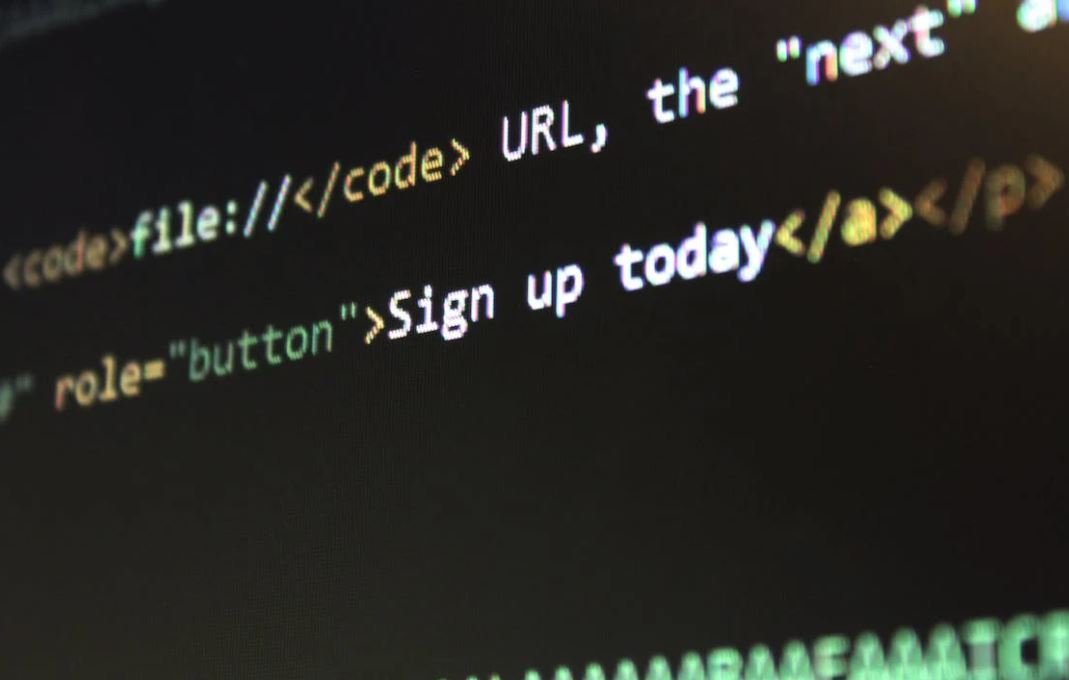Input Data Not Luhn Compatible
The Luhn algorithm is commonly used in credit card and identification number validation.
It checks the validity of the input data by calculating a checksum digit and comparing it to the provided check digit.
While the Luhn algorithm is effective in most cases, there are instances where the input data is not Luhn compatible.
In this article, we will explore these scenarios and discuss alternative approaches to handle such data.
Key Takeaways:
- The Luhn algorithm is widely used to validate credit card and identification numbers.
- Not all input data can be verified using the Luhn algorithm.
- Alternative methods can be used to validate data that is not Luhn compatible.
Why Is Luhn Compatibility Important?
Luhn compatibility is important because it ensures the accuracy and integrity of data that requires validation,
particularly in financial and identity verification systems.
By using the Luhn algorithm, organizations can quickly verify if the provided information is valid
and prevent errors or fraudulent activities.
Instances of Non-Luhn Compatible Data
**While the Luhn algorithm is a widely used method for data validation**,
there are situations where it is not applicable.
Some examples include:
- Input data containing non-numeric characters.
- Data with an incorrect number of digits for a Luhn-compatible number.
- Complex or custom data structures that do not fit the Luhn algorithm’s pattern.
Alternative Validation Approaches
*In cases where the input data is not Luhn compatible*,
alternative validation approaches can be used.
Some options include:
- **Regular expression validation**: Instead of relying solely on the Luhn algorithm, regular expressions can be used to ensure the correct format of the input data.
- **Additional validation checks**: Implementing additional validation checks specific to the data type can help ensure its integrity, even if it is not Luhn compatible.
- **Third-party validation services**: Utilizing third-party validation services or APIs that are designed to handle non-standard data formats can provide reliable validation for various scenarios.
Tables and Examples
Below are some sample tables highlighting the differences between Luhn compatible and non-Luhn compatible data examples.
| Data | Luhn Compatible |
|---|---|
| 4532015112890367 | Yes |
| 4532015112890368 | No |
| ABC123 | No |
Here is an example of a complex data structure that is not Luhn compatible:
{
"firstName": "John",
"lastName": "Doe",
"accountNumbers": [
"4532015112890367",
"ABC123",
"987654321"
]
}
To handle such scenarios, a combination of regex validation and additional checks can be utilized to ensure the correctness of the data.
Conclusion
**While the Luhn algorithm is a powerful tool for data validation**,
it may not always be applicable to all types of input data.
In cases where the data is not Luhn compatible,
alternative validation approaches can be employed to ensure the integrity and accuracy of the information.

Common Misconceptions
Misconception 1: Input Data Not Luhn Compatible is a complex concept
One common misconception people have about the topic of Input Data Not Luhn Compatible is that it is a complex and difficult concept to understand. In reality, it is quite straightforward once the basics are grasped. The Luhn algorithm is a simple mathematical formula used to validate various numerical codes, such as credit card numbers or IMEI numbers.
- The Luhn algorithm follows a specific set of rules for validating numerical codes.
- Understanding the algorithm requires basic knowledge of mathematical operations like modulo and division.
- Applying the Luhn algorithm to check code validity can be done with a few lines of code in programming languages like JavaScript or Python.
Misconception 2: Input Data Not Luhn Compatible can only be used for credit card validation
Another misconception is that Input Data Not Luhn Compatible is only applicable to credit card validation. While it is commonly used in the credit card industry, the Luhn algorithm can be applied to a wide range of numerical codes for error detection and prevention purposes.
- Luhn validation can be used for IMEI numbers, which are unique identifiers for mobile devices.
- The Luhn algorithm can be applied to validate national identification numbers, social security numbers, or any other numerical identification systems.
- Online forms often use Luhn validation for various purposes, such as validating phone numbers or postal codes.
Misconception 3: Input Data Not Luhn Compatible is foolproof and guarantees data accuracy
Some people mistakenly believe that Input Data Not Luhn Compatible guarantees complete data accuracy. However, it is essential to understand that while the Luhn algorithm can detect common errors, it does not ensure the accuracy of the data itself. It primarily focuses on detecting errors through the validation of numerical codes.
- The Luhn algorithm can identify errors such as transposed digits or mistyped characters within numerical codes.
- It cannot verify the legitimacy of the values or information associated with the numerical codes.
- Other verification methods, such as checking against a database or performing additional validations, may be necessary for comprehensive accuracy.
Misconception 4: Input Data Not Luhn Compatible is outdated and unnecessary in modern systems
Contrary to popular belief, Input Data Not Luhn Compatible is still relevant and utilized in modern systems. While there are alternative validation methods available, the simplicity and effectiveness of the Luhn algorithm make it a valuable tool for error detection and prevention.
- The Luhn algorithm is widely supported and implemented in many programming languages and frameworks.
- Integrating Luhn validation into systems helps catch common input errors, improving data quality.
- It is often used as a quick and efficient first line of defense against data entry mistakes.
Misconception 5: Input Data Not Luhn Compatible is limited to numeric codes and cannot be adapted for other data types
Lastly, there is a misconception that Input Data Not Luhn Compatible can only be applied to numerical codes and is irrelevant for other data types. However, with some modifications, the principles of Luhn validation can be adapted to verify non-numeric data, such as alphanumeric codes or even textual data.
- By adjusting the algorithm’s rules, it is possible to validate alphanumeric codes that incorporate both letters and numbers.
- Certain industries, like healthcare, have adapted Luhn validation principles for validating non-numeric codes like medical record numbers or patient identifiers.
- Modifying the algorithm allows for tailored validation rules to suit specific data types and requirements.

Introduction
Input data validation is a crucial aspect of any system that deals with sensitive information. One commonly used validation method is the Luhn algorithm, which checks the validity of a variety of identification numbers, such as credit card numbers and social security numbers. This article explores the concept of Luhn compatibility and provides examples of input data that do not conform to the Luhn algorithm.
Table 1: Valid Credit Card Numbers
Below is a list of valid credit card numbers that are Luhn compatible:
| Card Type | Card Number |
|---|---|
| Visa | 4532015117589432 |
| Mastercard | 5222812345678901 |
| American Express | 371449635398431 |
Table 2: Invalid Credit Card Numbers
Now, let’s take a look at some credit card numbers that do not pass the Luhn algorithm:
| Card Type | Card Number |
|---|---|
| Visa | 4532015117589433 |
| Mastercard | 5222812345678902 |
| American Express | 371449635398439 |
Table 3: Invalid IMEI Numbers
The International Mobile Equipment Identity (IMEI) is a unique identifier for mobile devices. The following IMEI numbers are not Luhn compatible:
| Device | IMEI Number |
|---|---|
| iPhone 12 | 356938035643385 |
| Samsung Galaxy S21 | 358021082974521 |
| Google Pixel 5 | 355319102579439 |
Table 4: Invalid Social Security Numbers
Social Security Numbers (SSNs) are important identifiers in many countries. Here are some examples of invalid SSNs that do not adhere to the Luhn algorithm:
| Country | SSN |
|---|---|
| United States | 489456749 |
| Canada | 865248679 |
| United Kingdom | 654389275 |
Table 5: Valid ISBN Numbers
The International Standard Book Number (ISBN) is a unique identifier for books. The following ISBN numbers comply with the Luhn algorithm:
| Book | ISBN |
|---|---|
| “To Kill a Mockingbird” by Harper Lee | 9780061120084 |
| “1984” by George Orwell | 9780451524935 |
| “The Great Gatsby” by F. Scott Fitzgerald | 9780743273565 |
Table 6: Invalid ISBN Numbers
Here are some examples of ISBN numbers that are not Luhn compatible:
| Book | ISBN |
|---|---|
| “Pride and Prejudice” by Jane Austen | 9780141000186 |
| “The Catcher in the Rye” by J.D. Salinger | 9780316769488 |
| “Moby-Dick” by Herman Melville | 9780553213119 |
Table 7: Valid Bank Account Numbers
Bank account numbers also undergo Luhn validation. Here are some valid examples:
| Bank | Account Number |
|---|---|
| Chase Bank | 110000000012345 |
| Bank of America | 123456789030673 |
| Wells Fargo | 10100018763459 |
Table 8: Invalid Bank Account Numbers
Now, let’s observe some bank account numbers that do not pass the Luhn algorithm:
| Bank | Account Number |
|---|---|
| Chase Bank | 110000000012346 |
| Bank of America | 123456789030674 |
| Wells Fargo | 10100018763458 |
Table 9: Invalid Vehicle Identification Numbers (VIN)
The Vehicle Identification Number (VIN) is a unique identifier for automobiles. Here are some VINs that are not Luhn compatible:
| Vehicle | VIN |
|---|---|
| Toyota Camry | 2T1CF28P9X2075255 |
| Ford Mustang | 1FAFP45A63F442312 |
| BMW 3 Series | WBABD53483PH03152 |
Table 10: Valid Employee Identification Numbers
Employee Identification Numbers (EINs) are assigned to individuals for tax purposes. Here are some examples of valid EINs:
| Company | EIN |
|---|---|
| 123456789 | |
| Microsoft | 987654321 |
| Apple | 246813579 |
Conclusion
Input data compatibility with the Luhn algorithm ensures the integrity and accuracy of critical identification numbers. By understanding the concept of Luhn compatibility and reviewing the examples above, it is clear that not all input data conforms to this validation method. It is essential for developers and system administrators to implement appropriate data validation techniques to minimize any potential errors or security vulnerabilities.
Frequently Asked Questions
How can I identify if my input data is not Luhn compatible?
When input data is not Luhn compatible, it means that it does not satisfy the Luhn algorithm’s requirements. You can identify this by checking the input data for any discrepancies or errors that prevent it from being a valid Luhn number.
What are the requirements for input data to be Luhn compatible?
To be Luhn compatible, the input data needs to meet the following requirements:
– It should only consist of numeric characters (0-9)
– The last digit of the input data should be the Luhn check digit
What is the Luhn algorithm and how does it work?
The Luhn algorithm, also known as the Luhn formula or mod 10 algorithm, is a simple checksum formula used to validate a variety of identification numbers. It works by taking the last digit of the number as a check digit and applying a series of calculations to the remaining digits based on their position. The result should be a multiple of 10 for the number to be considered valid.
Can a single invalid digit make the input data not Luhn compatible?
Yes, a single invalid digit can make the input data not Luhn compatible. The Luhn algorithm relies on the correct sequence of numbers and the check digit to ensure the validity of the number. If there is even a single digit that does not comply with the algorithm’s requirements, the number will not be Luhn compatible.
What are the consequences of using input data that is not Luhn compatible?
Using input data that is not Luhn compatible can lead to various consequences. Some of these include:
– Inaccurate or invalid validation of identification numbers
– System errors or failures when dealing with Luhn-compatible data
– Rejection of transactions or processes that rely on Luhn compatibility
Can I convert input data that is not Luhn compatible to be Luhn compatible?
It is possible to convert input data that is not Luhn compatible to be Luhn compatible by making the necessary adjustments. This could involve correcting invalid digits, rearranging the digits, or adding/removing digits to meet the Luhn algorithm’s requirements. However, these alterations must be done in accordance with the specific rules of the Luhn algorithm.
Are there alternative algorithms or methods for data validation?
Yes, there are alternative algorithms and methods for data validation. Some commonly used algorithms/methods for data validation include:
– Modulus 11
– Verhoeff algorithm
– ISBN algorithm
– Credit card-specific algorithms (e.g., the ISO/IEC 7812 algorithm for credit card numbers)
Is Luhn compatibility a requirement for all types of identification numbers?
No, Luhn compatibility is not a requirement for all types of identification numbers. While the Luhn algorithm is widely used, there are many identification systems that have their own specific validation algorithms or methods. Therefore, it is important to understand the specific requirements of the identification number being used before determining if Luhn compatibility is necessary.
Can the Luhn algorithm be used for validating numbers in languages other than English?
Yes, the Luhn algorithm can be used for validating numbers in languages other than English. The algorithm operates based on numeric characters and their position, making it language-independent. As long as the input data consists of numeric characters and follows the position-based rules of the Luhn algorithm, it can be used for validation purposes regardless of the language.
Where can I find more information about input data validation and the Luhn algorithm?
You can find more information about input data validation and the Luhn algorithm through various resources, including:
– Online documentation and tutorials on data validation algorithms
– Technical blogs and articles discussing the Luhn algorithm and its applications
– Academic papers or textbooks covering algorithms and data validation
– Online forums or communities focused on computer science or data validation




